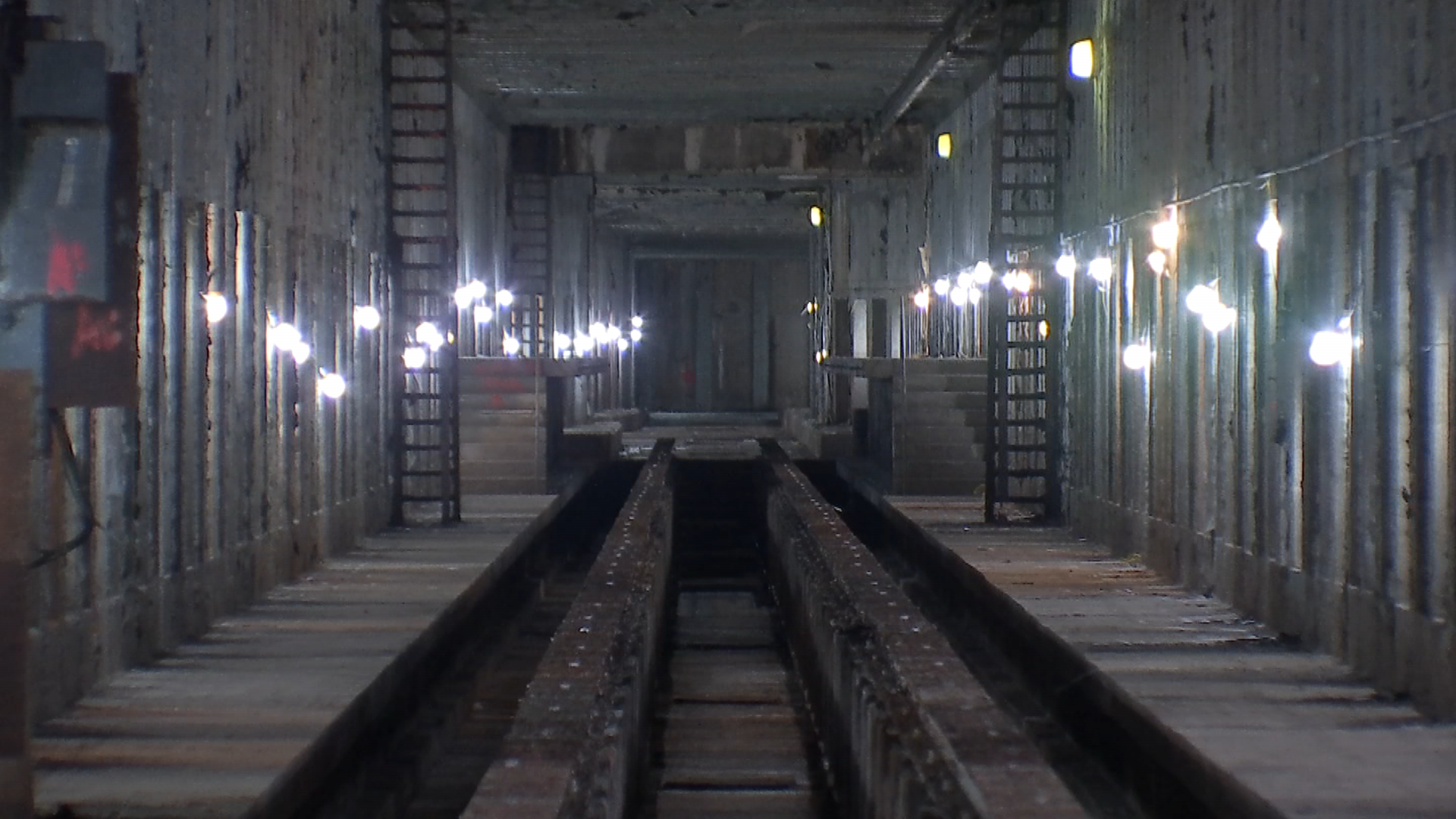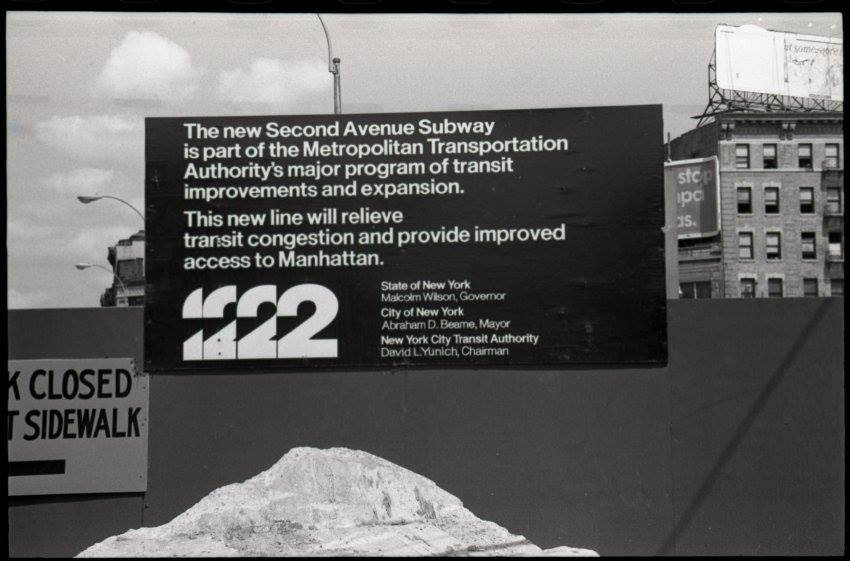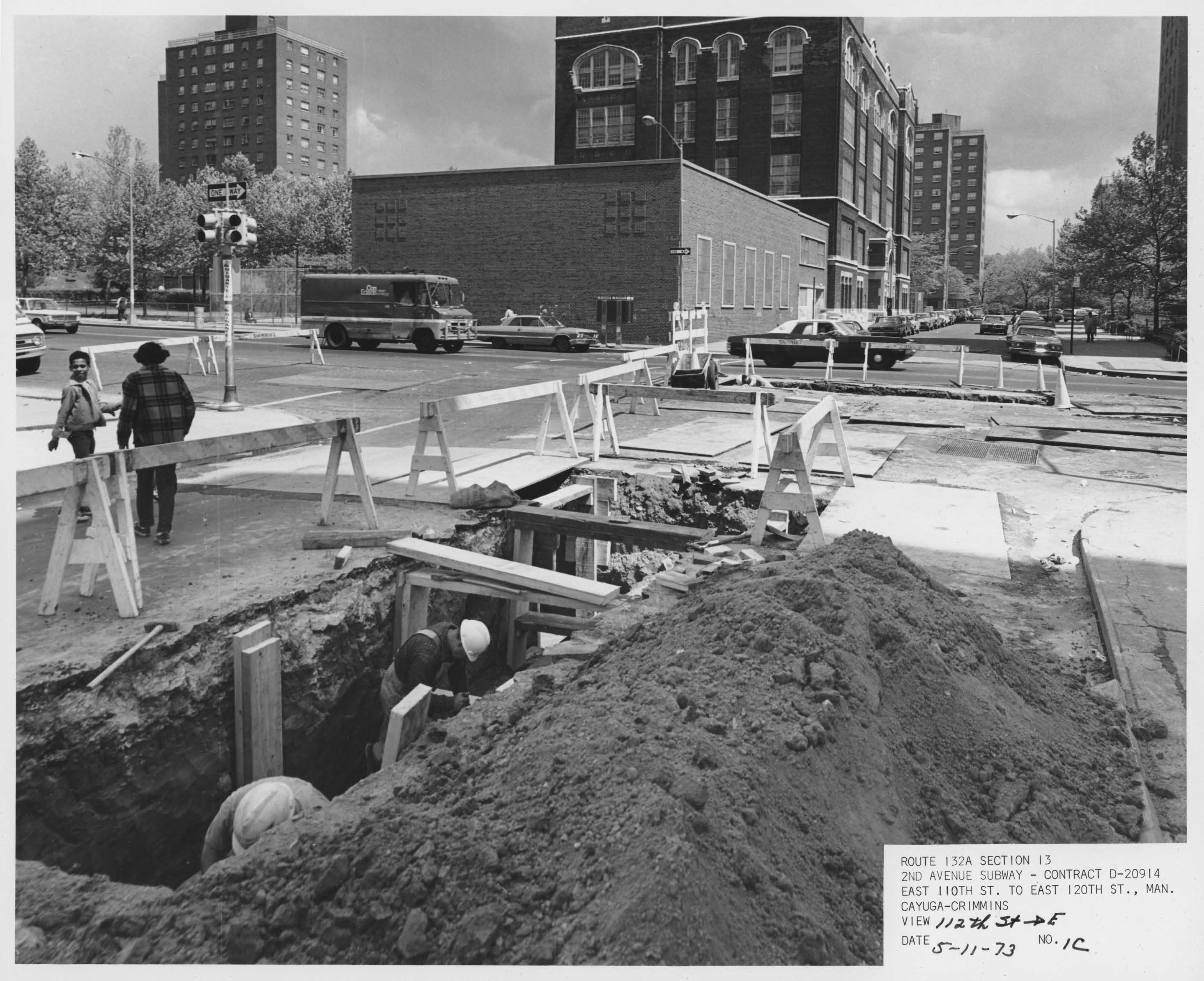In East Harlem, beneath Second Avenue, lies a tunnel to nowhere.

(Inside a never-used Second Avenue Subway tunnel. Aside from some inspections by MTA workers, the tunnels have been sealed for decades. Jose Martinez/NY1).
Stretching from 110th to 120th Street, it was built in the 1970s, part of a still-unrealized goal of running subway trains all along Manhattan's far East Side. It's a reminder of an era when New York dreamed big — and of a time when New York didn't have the money to fulfill its dreams.

(The Second Avenue Subway dream got a bit of a revival two years ago when a portion of the line opened after decades of inactivity. But the dream of running trains along the far East Side is still incomplete. Photo courtesy of the New York Transit Museum).
On Friday, NY1 got a rare look inside the tunnel, which looks as it did when construction stopped in 1975.
"This is not a relic," MTA Chief Development Officer Janno Lieber said inside the tunnel. "Good construction. This kind of structural construction is usable today."
In 1972, Gov. Nelson Rockefeller and Mayor John Lindsay broke ground on the project. Over the next three years, four sections were tunneled, before Mayor Abe Beame halted construction as the city's finances skidded toward a brush with bankruptcy.

(Workers hammer away at construction for the Second Avenue Subway line before the city's finances halted the work. Photo courtesy of the New York Transit Museum).
The tunnels were sealed, absent trains or people, except for visits every two or three months by MTA workers.
"There's the occasional inspection just to check on the integrity of the material — the paint, the concrete, so on and so forth," Superintendent Dion Goddard said. "Water intrusion, to make sure it's not affecting the infrastructure."
The MTA finally resumed construction in 2007, excavating from 96th and Second, to 63rd and Lexington. Trains began running along that stretch nearly two years ago.
Encouraged by the line's heavy use, the MTA is thinking big again, hoping to extend it north to 125th and Lexington Avenue.
"When they knocked down the Third and Second Avenue Els, they were promised a subway," Lieber said. "It's time for us to make good on that promise."
The MTA has set aside $1.7 billion for design work and to relocate utilities. Construction could begin in as soon as two years, but reaching 125th Street would cost many billions of dollars.
"You have got to go deep through rock, and mixed rock and soil because we have got to go under the Lexington Avenue line," Lieber said.
If the MTA resumes work, a section built from 110th to 120th Streets could finally be used. But parts of the original plan would have to change.
The thinking back in the 1970s was to use a section as maintenance tracks for trains that needed repair work. Now it would be used as an island platform if and when the 116th Street station gets built.
That's also if and when the MTA can find the money, a big hurdle that has stopped the Second Avenue project before.



